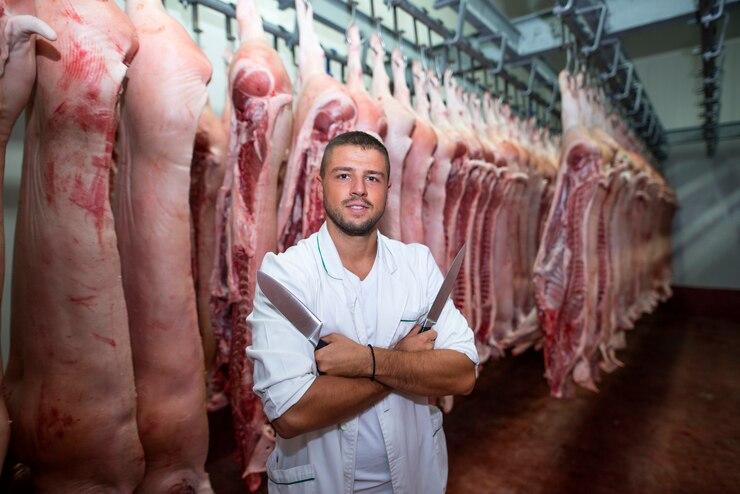Technology In The Slaughterhouse: Five Ways Life Is Made Better For Humans And Animals
3 Mins Read
Published on: 21 April 2022
Last Updated on: 26 April 2022

toc impalement
The use of technology in slaughterhouses has revolutionized the meat industry as it has made the process more efficient and faster.
The introduction of robotics in the 1990s allowed for the automation of many tasks within slaughterhouses, such as handling and stunning animals.
This has significantly reduced the time needed to get livestock to the slaughterhouse and has made it possible to produce meat faster and at a lower cost.
Further, technology has allowed slaughterhouses to operate more efficiently and maintain a higher level of quality control.
This has led to a decrease in the number of illnesses caused by meat, as well as an increase in the overall sale of meat.
Thus, here are some ways how technology is helping to make lives better for humans and animals.
5 Technology Methods For Improved Human and Animal Lives
Every industry and factory has its operations systems. Science and technology are evolving. Along with science and technology, every industry is starting to adopt free technology to minimize human error.
Let’s see what slaughterhouse-five, technology makes your work fast and more productive are.
1. Automation
Automation in slaughterhouses has been around for a while now, and it is gradually becoming more popular. There are many benefits to automation, including its being time and cost-effective.
In addition, it can help to increase efficiency and safety in the slaughterhouse. Further, it is known to enhance meat quality and reduce the risk of human error.
Automations are always improvising the efficiency of the slaughterhouse. This is not only that you will require a fewer number of human employees inside the slaughterhouse.
After the pandemic, we all agree with the point that fewer numbers of people gathering are always better.
2. Computerized Monitoring

Another technology method that helps to increase efficiency and safety is computerized monitoring.
This technology allows the slaughterhouse workers to see, specifically, what is happening at any given time.
It can also monitor the movement of animals and the flow of blood through a slaughterhouse, which can help them to avoid accidents. Computerized meat inspection systems can also help to ensure that each animal is inspected humanely.
Computerized monitoring is always better than human monitoring. As the computer operator can easily identify any malfunctions of the systems and call the technicians on time.
3. The Robot Depalletizer

A robotic depalletizer is used to remove the skin, fat, and other unwanted parts from carcasses before they are butchered.
The depalletizer can reduce the number of trips a butcher has to make to the slaughterhouse and speed up the process.
It helps to reduce labor costs and decrease contamination in the meat production process. In addition, robot depalletizers are more efficient than human workers and can produce higher-quality meat.
4. Radiology

Slaughterhouse radiology is a technique used to study the internal organs of animals. This technique is supportive because it can help to prove that an animal was not killed inhumanely.
In the slaughtering of animals, it is possible to see the condition of an animal’s organs before and after being slaughtered through radiology.
It can help law enforcement agencies to prove that animals were not mistreated before they were slaughtered.
5. Deboning
Deboning includes removing the skin and meat from an animal carcass. It improves animal and human life in slaughterhouses.
It also reduces the amount of stress on the animal, enhances the quality of the meat, and less waste.
It is an essential step in the slaughterhouse, as it allows for more efficient processing and ensures that the meat is of the correct quality.
Deboning also has many benefits for both human and animal life. Like, it leads to a cleaner product. The removal of blemishes and fat makes the meat more appetizing to consumers.
Conclusion:
All of these five slaughterhouse technologies are making revolutions in the meat production industry. But every instrument requires proper maintenance. And you cannot skip the step of maintenance and monitoring processes. If you install any automatic system in your factory, it is better to monitor its functions daily. And call the engineer before any accident can happen. Else you can also set up a separate maintenance department.
Read Also:


















Comments Are Closed For This Article